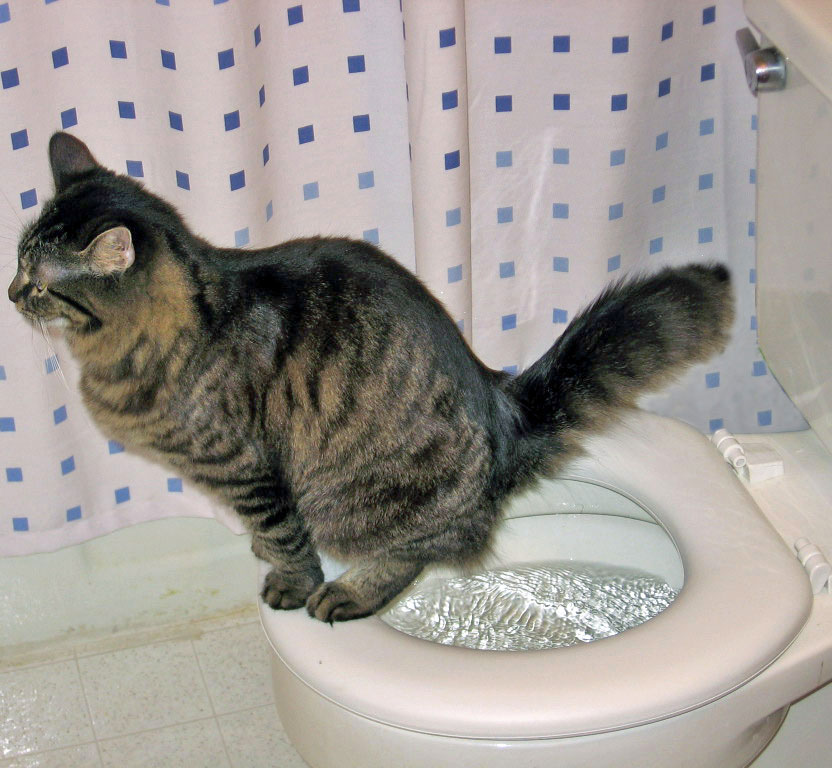Why Flushing Cat Poop Down Your Toilet Is Harmful - Tips for Correct Disposal
Click HereThey are making several great pointers on the subject of How to Dispose of Cat Poop and Litter Without Plastic Bags in general in the content on the next paragraphs.

Introduction
As feline proprietors, it's vital to be mindful of exactly how we deal with our feline good friends' waste. While it may seem hassle-free to purge cat poop down the bathroom, this method can have destructive consequences for both the atmosphere and human health and wellness.
Alternatives to Flushing
The good news is, there are more secure and extra liable methods to throw away feline poop. Think about the following choices:
1. Scoop and Dispose in Trash
One of the most common method of disposing of pet cat poop is to scoop it into a biodegradable bag and toss it in the trash. Make certain to utilize a dedicated trash scoop and throw away the waste quickly.
2. Usage Biodegradable Litter
Opt for naturally degradable pet cat litter made from products such as corn or wheat. These clutters are environmentally friendly and can be safely gotten rid of in the garbage.
3. Bury in the Yard
If you have a lawn, take into consideration hiding feline waste in a marked location away from veggie yards and water sources. Be sure to dig deep enough to prevent contamination of groundwater.
4. Install a Pet Waste Disposal System
Buy a pet dog garbage disposal system particularly made for cat waste. These systems utilize enzymes to break down the waste, minimizing smell and environmental impact.
Wellness Risks
In addition to environmental concerns, flushing pet cat waste can additionally present health and wellness risks to human beings. Feline feces may contain Toxoplasma gondii, a bloodsucker that can cause toxoplasmosis-- a possibly serious illness, specifically for expecting females and individuals with damaged immune systems.
Ecological Impact
Flushing feline poop introduces dangerous pathogens and bloodsuckers right into the supply of water, posing a considerable threat to aquatic environments. These contaminants can negatively affect aquatic life and concession water quality.
Conclusion
Accountable family pet possession expands past giving food and sanctuary-- it additionally entails proper waste management. By refraining from flushing pet cat poop down the commode and going with different disposal approaches, we can lessen our ecological impact and protect human health.
CAN I FLUSH MY CAT'S POOP DOWN THE TOILET?
Always avoid flushing cat poop down the drain because not only could it potentially contain harmful parasites called toxoplasmosis, the litter could sit in your line and lead to a clog.
Plenty of waste gets flushed down your toilet every day, so what harm could a little cat poop and cat litter do? The answer is a lot, which is why you never want to send it down your drains.
Can I Flush My Cat's Poop Down The Toilet?One of the biggest problems with flushing your cat’s presents is the harmful parasites in your feline’s stool called toxoplasmosis. Extremely dangerous for humans, especially pregnant women and people who are immunocompromised, these parasites can cause a multitude of problems for unborn babies and even cause death or miscarriage if the infection happens early. That’s why you should always avoid touching cat poop. Also, water systems are not equipped to handle toxoplasmosis and are unable to destroy the parasite before it’s sent back into the environment, potentially jeopardizing the health of local area wildlife, specifically marine life.
Flushing cat poop could also lead to a future drain clog. Try as you may to eliminate any litter from it, there will always still be some stuck on there – and even if it says flushable on the label, it’s not! Cat litter is made up of bentonite clay, which has the tendency to harden when wet, creating a thick, almost cement-like quality. Cat litter that ends up down the drain can expand from the moisture in the pipes and then harden, blocking any wastewater. If you have a septic tank or a cesspool, it cannot handle cat litter either, no matter what kind. If it solidifies in the tank, in any of the system’s major parts like the inlet baffle, it’ll create some expensive problems.
The best way to dispose of cat poop safely is to scoop it into a bag and throw it into the trash – and ways of dealing with the smell include adding baking soda and replacing the box more.
Now that we’ve explained the potential harm that flushing cat poop can cause to you and your drains, you might be wondering the best way of dealing with it. Unfortunately, it’s the old-fashioned way of scooping it into a bag and then placing it into a trash can. They also make pet-proof trash cans that lock in the smell, so that you don’t have to always immediately take it out. If you’re tired of smelling the litter box after even just one use from your feline, there’s things you can do to help combat that smell. Adding baking soda to the litter will reduce smells, but just don’t add too much or your cat will no longer want to use the box. You could also replace the box more frequently, at least once a year, as those smells can just seep inside the scratch marks. Lastly, try changing to a new litter formula – some are better with smells than others.

Do you really like reading up on How to Dispose of Cat Poop and Litter Without Plastic Bags? Put a remark below. We'd be interested to know your thinking about this content. Hoping that you visit us again later on. Please take the time to distribute this entry if you enjoyed it. I appreciate reading our article about Can You Flush Cat Poop Down The Toilet?.
Further Details